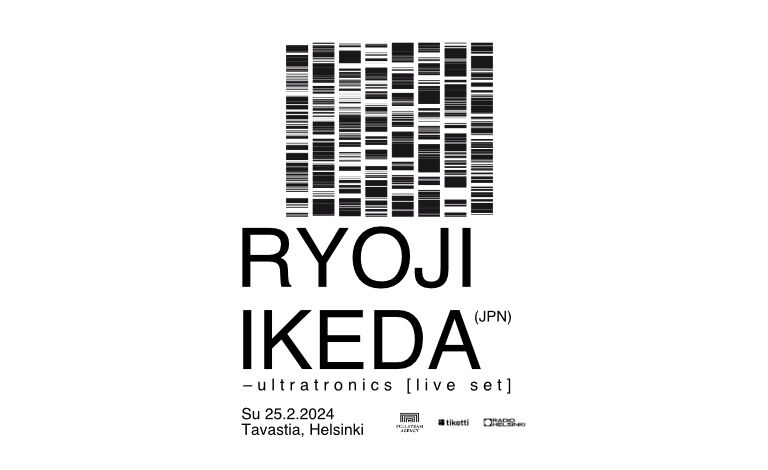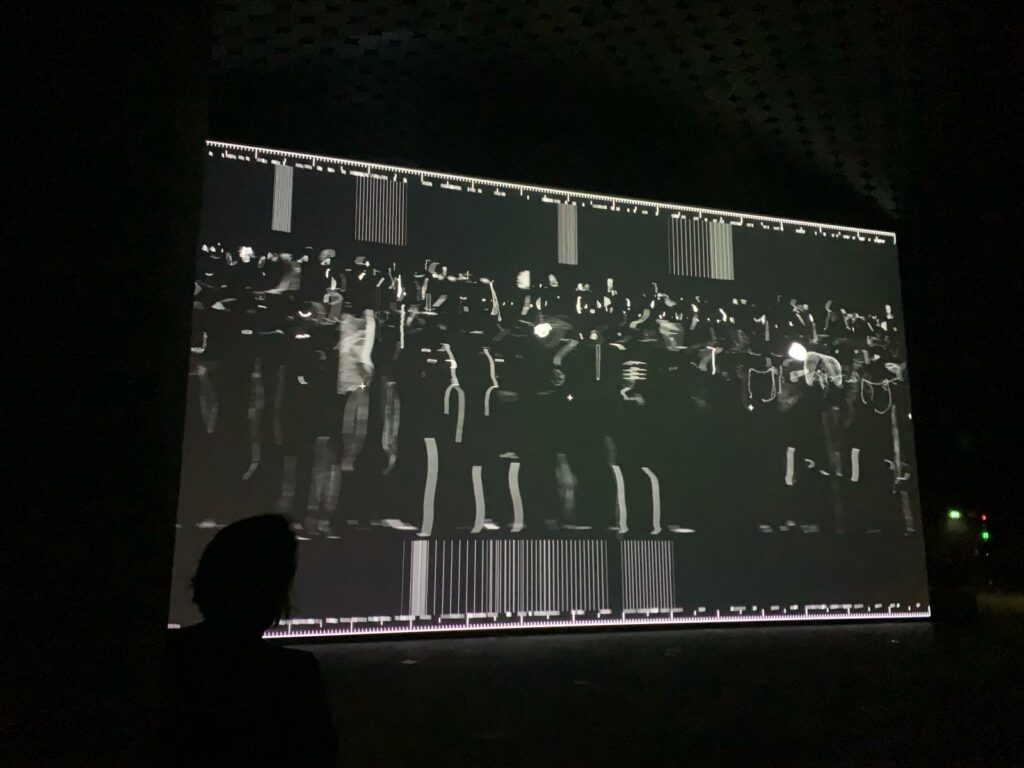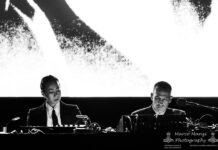February 25th, 2024, marked the conclusion of Japanese visual artist Ryoji Ikeda‘s exhibition at Amos Rex Museum, where visitors had the rare opportunity to immerse themselves in his art pieces before attending his live performance. The exhibition, characterized by its utilization of scientific imagery and data visualization, featured fast-moving sequences and stroboscopic effects that left viewers both intrigued and disoriented. This audiovisual journey provided a glimpse into Ikeda‘s unique artistic vision, setting the stage for his upcoming concert at Tavastia.

With roots dating back to the ’80s and ’90s, Ikeda began his career in the Kyoto collective Dumb Type, where he explored electronic music as both a DJ and composer. Since then, he has evolved into a prominent figure in the realm of minimalist music, drawing inspiration from techno and electronic genres. Renowned for his ability to seamlessly blend sound and visuals, Ikeda is recognized as one of the few international artists proficient in both music and visual arts. His immersive live performances and installations intricately weave together sound, visuals, physical phenomena, and mathematical concepts.
While parts of the art pieces “Data-Verse 1” and “Data-Verse 2” were represented in Ikeda‘s show, it was his latest album, “ultratronics,” released in 2022, that served as the foundation for the audiovisual concert at a sold-out Tavastia. Meanwhile, visitors to the Amos Rex Museum in Helsinki could immerse themselves in the exhibition curated by Terhi Tuome featuring five installations by the Japanese artist. These installations challenge perceptions of the universe’s invisible dimensions and push the boundaries of human perception.
The experimental artist performed an intense (and loud) electronic set, a bit short of one hour of music intertwined with visuals, briefly interrupted only by the applause of the crowd in between. The white noise and waves frantically moving on the screen in unison with the music represented a rather overwhelming sensory experience. In fact, there were warnings that this could have triggered epileptic episodes for people sensitive to this kind of frantic display (there was also a strict “no photo or video recordings allowed” policy).
The nearly hypnotic nature of the composition and the accompanying visuals almost made one lose oneself in the moment. Everything moved at a lightning-fast pace, so much so that when the show ended, most of the audience took their sweet time to leave the venue, thinking – until the staff came on stage – there could have been still more to it.
For the people who had been witnessing the artist’s work over the past few months, this was a fitting addition that enriched the overall experience. Of course, many people were also there because they were familiar with the artist’s earlier work, some even just for the music, and more than a few could be spotted dancing to the soundscape created by the multi-talented Japanese artist, who didn’t say a single word during the entire set. In the end, it was not even a bad thing that the show ended so early on a Sunday evening, it is perfectly acceptable to be on the way home at half past eight.

Written by Marco Manzi





